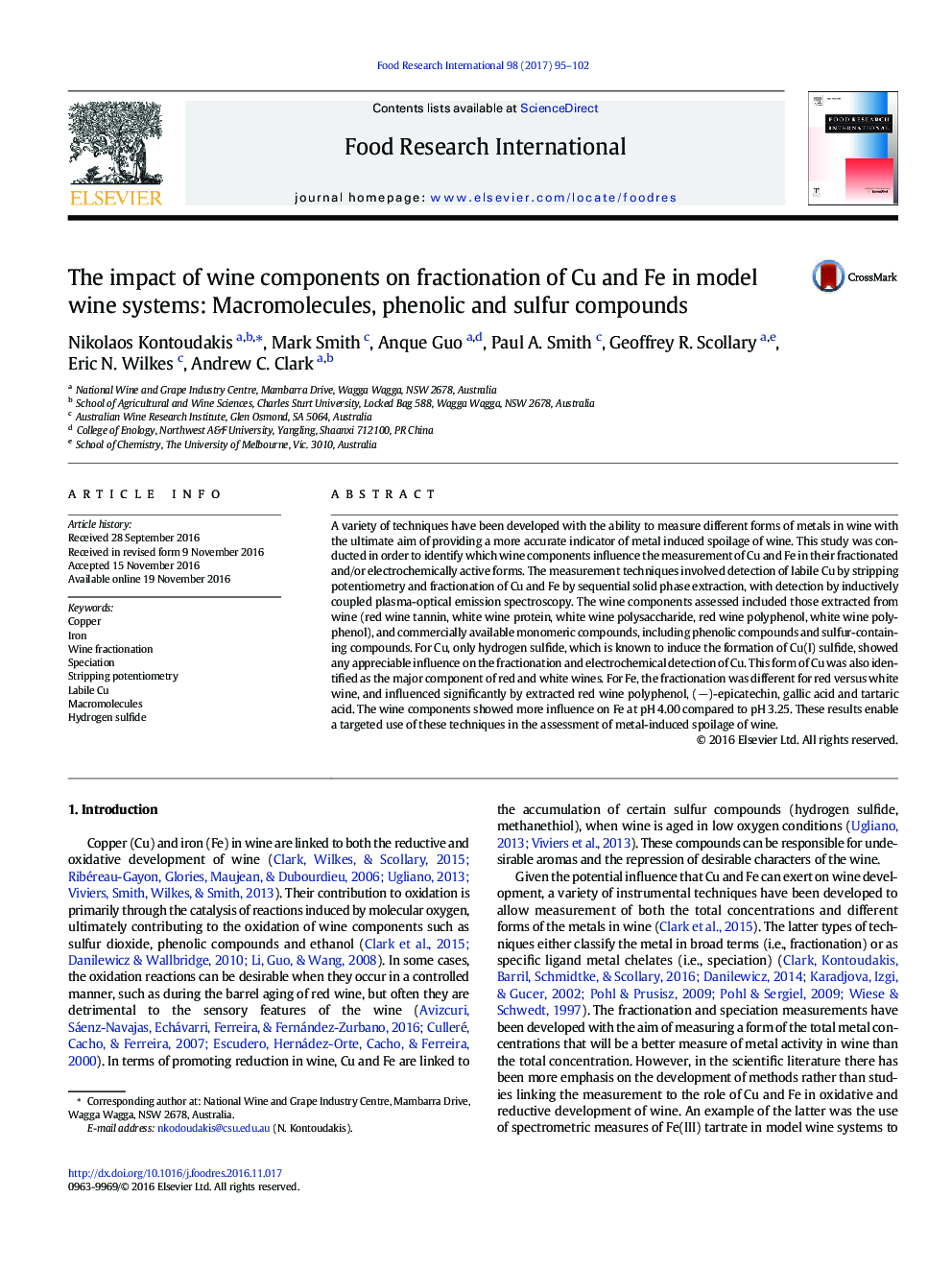| کد مقاله | کد نشریه | سال انتشار | مقاله انگلیسی | نسخه تمام متن |
|---|---|---|---|---|
| 5768177 | 1628452 | 2017 | 8 صفحه PDF | دانلود رایگان |

- Assessment of a range of important wine components on techniques for the fractionation of Cu and Fe in wine.
- Use of SPE for fractionation of Cu and Fe in wine and model wines and their detection via ICP-OES.
- Labile Cu measurement in wine and model wine wines utilizing constant current medium exchange stripping potentiometry.
- Hydrogen sulfide: the only wine component that binds Cu strongly.
A variety of techniques have been developed with the ability to measure different forms of metals in wine with the ultimate aim of providing a more accurate indicator of metal induced spoilage of wine. This study was conducted in order to identify which wine components influence the measurement of Cu and Fe in their fractionated and/or electrochemically active forms. The measurement techniques involved detection of labile Cu by stripping potentiometry and fractionation of Cu and Fe by sequential solid phase extraction, with detection by inductively coupled plasma-optical emission spectroscopy. The wine components assessed included those extracted from wine (red wine tannin, white wine protein, white wine polysaccharide, red wine polyphenol, white wine polyphenol), and commercially available monomeric compounds, including phenolic compounds and sulfur-containing compounds. For Cu, only hydrogen sulfide, which is known to induce the formation of Cu(I) sulfide, showed any appreciable influence on the fractionation and electrochemical detection of Cu. This form of Cu was also identified as the major component of red and white wines. For Fe, the fractionation was different for red versus white wine, and influenced significantly by extracted red wine polyphenol, (â)-epicatechin, gallic acid and tartaric acid. The wine components showed more influence on Fe at pHÂ 4.00 compared to pHÂ 3.25. These results enable a targeted use of these techniques in the assessment of metal-induced spoilage of wine.
173
Journal: Food Research International - Volume 98, August 2017, Pages 95-102